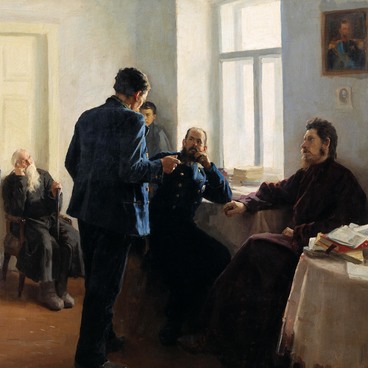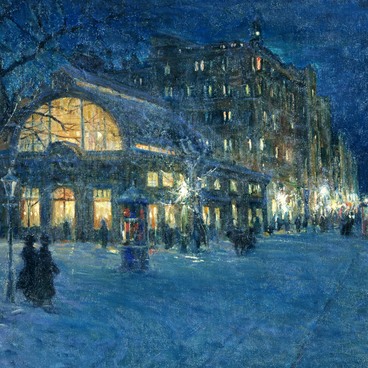This painting is a copy of a portrait painted by the Austrian painter Johann Baptist von Lampi the Elder in 1794. Lampi the Elder is known as a graphic artist, miniature painter, and also a skilled portrait painter. In 1792 he was invited to Russia by Empress Catherine II. The artist worked for five years in St. Petersburg at the Russian court. For the portrait of Catherine II of full height, he not only received a generous salary of 12 thousand rubles, but also an annual life allowance.
This portrait depicts Count Alexei Musin-Pushkin, a prominent statesman, scientist and collector of Russian antiquities and manuscripts. At the end of the 18th century, he headed the Academy of Arts, and also received the post of chief prosecutor of the Holy Synod - the supreme body of the church and state administration at that time. Musin-Pushkin was famous for his discovery and publication of the Old Russian literary monument The Word of Igor’s Campaign. The count also introduced many valuable Old Russian manuscripts into scientific use and arranged several noble estates. He left behind an extensive collection of Russian and foreign coins and medals.
Musin-Pushkin is depicted in a rich dress with seemingly exhibited awards. Such an image is typical for the ceremonial portrait - in the paintings of this genre, it is important to convey not only the external resemblance of the hero, but also his high social status. The man in the portrait is depicted as a high-ranking person, a social leader, winner of high awards. The ceremonial portraits are also characterized by the magnificent atmosphere and luxurious clothes of the models.
Musin-Pushkin is depicted by the waist, on his head there is a powdered wig with curls curled behind his ears. He is wearing a dark green uniform with a red collar without sewing and a burgundy cloak on his left shoulder. On the Count’s neck there is a sign of the Order of St. Prince Vladimir of the second degree, it hangs on the Vladimirskaya ribbon. From above on the left side of the chest there can be seen the star of the Order of St. Alexander Nevsky, and below there is a star of the Order of St. Vladimir. A red Alexandrovskaya tape is put on the left shoulder of Musin-Pushkin. Both the stars and the ribbon are partially hidden by the cloak.
This portrait depicts Count Alexei Musin-Pushkin, a prominent statesman, scientist and collector of Russian antiquities and manuscripts. At the end of the 18th century, he headed the Academy of Arts, and also received the post of chief prosecutor of the Holy Synod - the supreme body of the church and state administration at that time. Musin-Pushkin was famous for his discovery and publication of the Old Russian literary monument The Word of Igor’s Campaign. The count also introduced many valuable Old Russian manuscripts into scientific use and arranged several noble estates. He left behind an extensive collection of Russian and foreign coins and medals.
Musin-Pushkin is depicted in a rich dress with seemingly exhibited awards. Such an image is typical for the ceremonial portrait - in the paintings of this genre, it is important to convey not only the external resemblance of the hero, but also his high social status. The man in the portrait is depicted as a high-ranking person, a social leader, winner of high awards. The ceremonial portraits are also characterized by the magnificent atmosphere and luxurious clothes of the models.
Musin-Pushkin is depicted by the waist, on his head there is a powdered wig with curls curled behind his ears. He is wearing a dark green uniform with a red collar without sewing and a burgundy cloak on his left shoulder. On the Count’s neck there is a sign of the Order of St. Prince Vladimir of the second degree, it hangs on the Vladimirskaya ribbon. From above on the left side of the chest there can be seen the star of the Order of St. Alexander Nevsky, and below there is a star of the Order of St. Vladimir. A red Alexandrovskaya tape is put on the left shoulder of Musin-Pushkin. Both the stars and the ribbon are partially hidden by the cloak.

